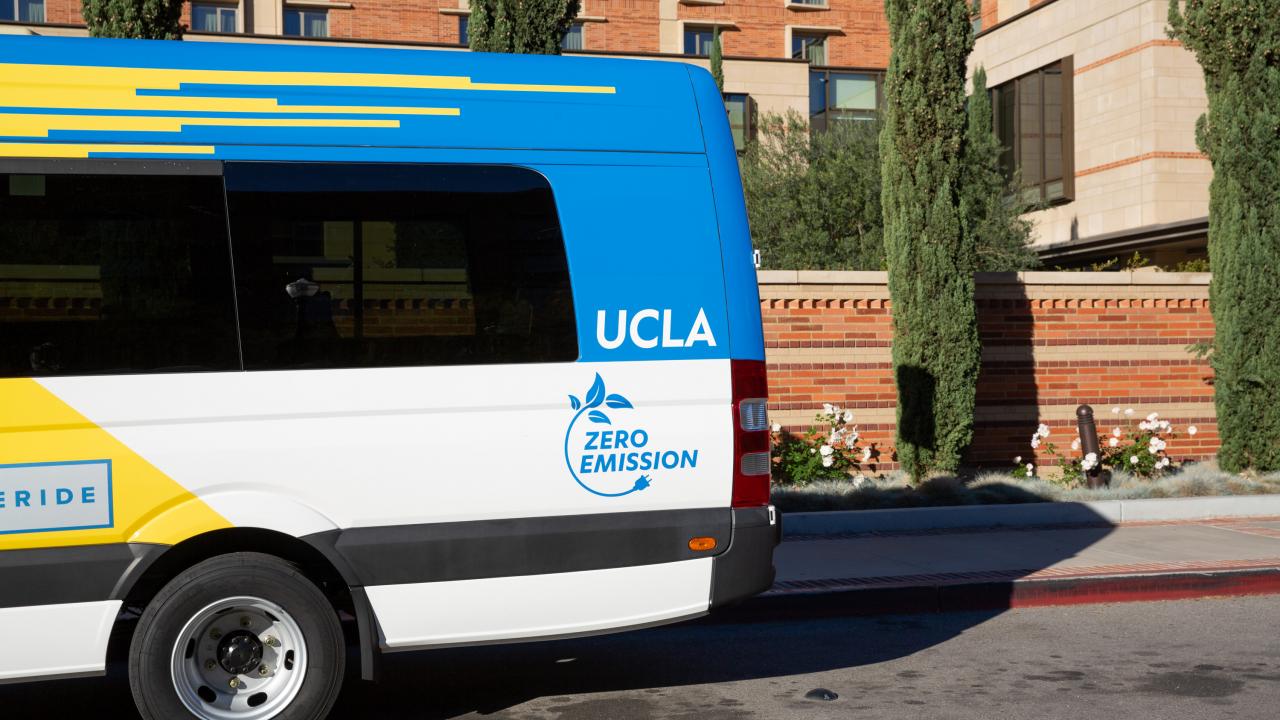Despite 2020's speedbumps, the University of California didn't pump the brakes on sustainability efforts, including UCLA's own accelerated climate action in the area of transportation.
Transportation is the leading source of greenhouse gas pollution in the state. Reducing emissions, and improving air quality, has never been more important, with 2020 making it clear clean air is critical to California’s environmental health and public health.
Although the pandemic, and subsequent campus closures, challenged each UC to meet its sustainability goals, every institution across the state pushed forward, making significant progress against climate change.
Here are some transportation highlights from UCLA in 2020:
- A 2020 Green Fleet Award winner, UCLA continues supercharging its fleet, phasing out fossil fuels in favor of electric vehicles. Of the 1,087 University-owned vehicles over, 300 are zero-emission. On track to run a completely carbon neutral fleet by 2025, UCLA’s ongoing switch to alternative fuel sources saves 8,500 gallons of gasoline and an estimated 108.5 metric tons of CO2 a year.
- Almost 55% of UCLA commuters travel to campus by walking, biking, riding a vanpool, joining a carpool, taking public transit, and telecommuting. UCLA's employee drive-alone continues to drop year after year, currently at 45.5%. Compared to LA County's drive-alone rate of around 70%, Bruins choose greener ways to get where they need to go.
- Campus enhancements made this past summer pave the way for improved pedestrian and bicycle safety. Striping and repaving at one of UCLA's busiest intersections completed the bike route connection into the campus. And restriping done to crosswalks at the same interchange improves visibility and safety.
Track sustainability progress at the University of California by visiting the new interactive website to explore detailed data about how UC is doing at the systemwide and campus level in transportation and zero waste, food, water, building operations, and more.






